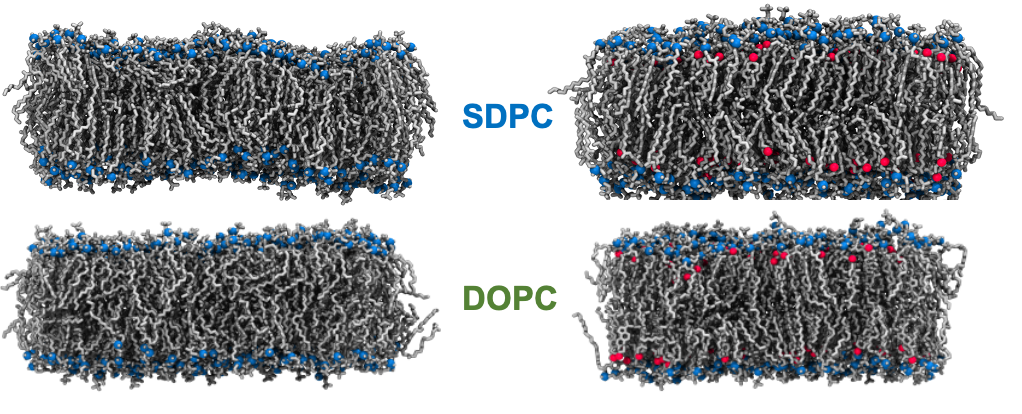Phospholipids are a diverse group of biomolecules consisting of a hydrophilic headgroup and two hydrophobic acyl tails. The nature of the head and length and saturation of the acyl tails are important for defining the biophysical properties of lipid bilayers. It has recently been shown that the membranes of certain yeast species contain high levels of unusual asymmetric phospholipids consisting of one long and one medium-chain acyl moiety, a configuration not common in mammalian cells or other well-studied model yeast species. This raises the possibility that structurally asymmetric glycerophospholipids impart distinctive biophysical properties to the yeast membranes. Previously, it has been shown that lipids with asymmetric length tails form a mixed interdigitated gel phase and exhibit unusual endotherm behavior upon heating and cooling. In this recent paper, we address physiologically relevant temperature conditions and, using atomistic molecular dynamics simulations and environmentally sensitive fluorescent membrane probes, characterize key biophysical parameters (such as lipid packing, diffusion coefficient, membrane thickness, and area per lipid) in membranes composed of both length-asymmetric glycerophospholipids and ergosterol. The simulations were conducted by Paul Smith in order to compliment the experimental work done by Maria Makarova and Dylan Owen at the University of Birmingham. Interestingly, we show that saturated but asymmetric glycerophospholipids maintain membrane lipid order across a wide range of temperatures. We also show that these asymmetric lipids can substiture of unsaturated symmetric lipids in the phase behaviour of ternary lipid bilayers. This may allow cells to maintain membrane fluidity, even in environments that lack oxygen, which is required for the synthesis of unsaturated lipids and sterols.
Full reference: Asymmetric glycerophospholipids impart distinctive biophysical properties to lipid bilayers. Paul Smith, Dylan M. Owen, Christian D. Lorenz & Maria Makarova Biophysical Journal (2021) 120 (9), 1746-1754.

